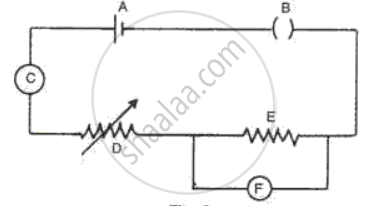Advertisements
Advertisements
प्रश्न
Let the resistance of an electrical device remain constant, while the potential difference across its two ends decreases to one fourth of its initial value. What change will occur in the current through it? State the law which helps us in solving the above stated question.
उत्तर
The change in the current flowing through the electrical component can be determined by Ohm's Law.
According to ohm's law i.e.,
V = IR
V: applied voltage
I: current
R: resistance
⇒ I = `"V"/"R"`
Now potential difference becomes one fourth,
V' = `"V"/4`
So current will be: I' =`(("V"//4))/"R"`
⇒ I' = `"v"/(4"R")`
⇒ I' = `"I"/4`
When the potential difference is one fourth, the current through the component also decreases to one fourth of its initial value.
संबंधित प्रश्न
The graph between V and I for a conductor is a straight line passing through the origin.
What should remain constant in a statement of this law?
A wire has a length of 2.0 m and a resistance of 5.0 Ω. Find the electric field existing inside the wire if it carries a current of 10 A.
Fig. represents the circuit used for the verification of Ohm's law. Label the parts from A to F. state the function of each.

What is meant by the drift speed of free electrons?
Rewrite the following statement by selecting the correct option.
The S.I. unit of resistance is __________.
What is ohmic device?
What is non ohmic device?

Calculate the total resistance of the circuit and find the total current in the circuit.
You are provided with a resistor, a key, an ammeter, a voltmeter, four cells of 1.5 V each and few connecting wires. Using circuit components, draw a labelled circuit diagram to show the setup to study Ohm's law.
State the relationship between potential difference (V) across the resistor and the current (I) flowing through it. Also draw V-I graph, taking V on the X-axis.
What is meant by resistance of a conductor ? Define its SI unit.
